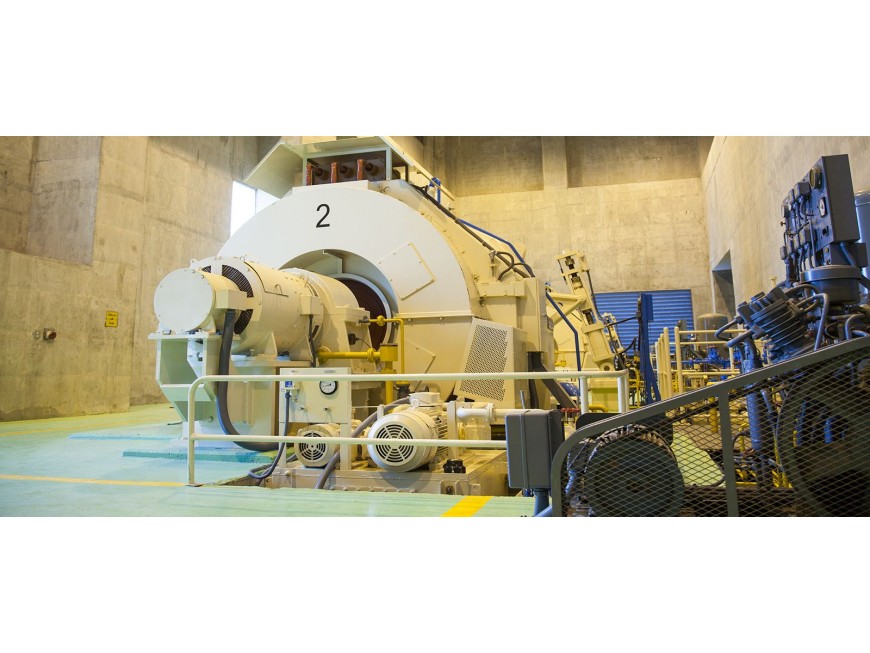ROTOR DYNAMIC FIELD BALANCING
What is “unbalance”?
Unbalance can occur in almost anything that rotates and is the uneven distribution of mass around the rotating object’s axis of rotation. A rotor is said to be out of balance when its centre of mass is out of alignment with the centre of rotation.
Unbalance will result in the rotor exhibiting a wobbling movement, causing vibration that becomes increasingly harmful as the rotor gains speed.
So what about “balancing”?
Put simply, balancing is the act of spinning a rotor whilst using computer software to measure unbalance, and then correcting any unbalance detected by adding or removing counterbalancing material. Once sufficient material has been added or removed, the rotor will spin efficiently and vibration will reduce.
Static vs. dynamic balancing
An object is said to be in static balance when the centre of gravity is on the axis of rotation. In this scenario the rotating mass has no tendency to rotate due to the influence of gravity, and it will rest without turning at any angular position on its bearings.
A rotating mass would be considered to be dynamically balanced when no centrifugal force or couple is produced during rotation. A balanced system can rotate without requiring external force or couple other than that required to support its weight. Unbalance in such a system would place stress on the bearings, resulting in undesirable vibration.
Rotor dynamic field balancing is a specialized technique used to balance rotating machinery while they are in operation. It involves the measurement and adjustment of unbalance forces and moments in rotating systems such as turbines, motors, fans, and pumps. Here’s an overview of how rotor dynamic field balancing works and its benefits:
Initial Measurement:
The first step in rotor dynamic field balancing is to measure the vibration characteristics of the rotating machinery using vibration sensors. These sensors capture the vibration signals generated by unbalance in the system.
Data Analysis:
The vibration data collected from the sensors is analyzed to determine the amplitude and phase of the vibration signals. This analysis helps identify the unbalance forces and moments that are causing the vibrations.
Correction Plan:
Based on the analysis, a correction plan is developed to reduce or eliminate the unbalance forces and moments. This plan typically involves adding or removing weight from specific locations on the rotating machinery to counteract the unbalance.
Field Balancing Equipment:
Specialized field balancing equipment is used to make the necessary adjustments during operation. This equipment includes precision weight placement mechanisms, laser alignment tools, and real-time measurement devices.
Weight Adjustment:
The field balancing equipment is used to add or remove weights at the predetermined correction locations. The adjustment process is done gradually, while the machinery is running, to achieve the desired balance.
Monitoring and Verification:
Throughout the balancing process, the vibration signals are continuously monitored to assess the effectiveness of the adjustments. Adjustments are made iteratively until the vibration levels are within the acceptable range.
Benefits of Rotor Dynamic Field Balancing:
Improved Machine Performance:
Rotor dynamic field balancing improves the overall performance of rotating machinery. Balancing the rotating components reduces vibration levels, minimizing wear and tear on the machinery, and improving its reliability and longevity.
Enhanced Energy Efficiency:
Unbalanced rotating machinery consumes more energy due to increased friction and vibration. By balancing the system, energy efficiency is improved, resulting in reduced power consumption and lower operating costs.
Minimized Vibrations and Noise:
Unbalance in rotating machinery leads to excessive vibrations and noise. Rotor dynamic field balancing significantly reduces these vibrations, creating a quieter and more comfortable working environment for operators and reducing the risk of damage to surrounding structures.
Increased Equipment Lifespan:
Balancing the rotating machinery helps prevent premature wear and damage to critical components such as bearings, seals, and shafts. This extends the lifespan of the equipment and reduces the frequency of maintenance and repairs.
Preventive Maintenance:
Rotor dynamic field balancing is a proactive maintenance approach that allows for the identification and correction of unbalance issues before they escalate into severe problems. By addressing unbalance early on, the risk of catastrophic failures and unexpected downtime is significantly reduced.
Improved Product Quality:
Balanced machinery ensures consistent and accurate operation, leading to improved product quality and reduced rejections or defects in manufacturing processes.
Rotor dynamic field balancing is a valuable technique for optimizing the performance, reliability, and efficiency of rotating machinery. By addressing unbalance issues, it helps minimize vibrations, improve energy efficiency, increase equipment lifespan, and enhance overall productivity.






